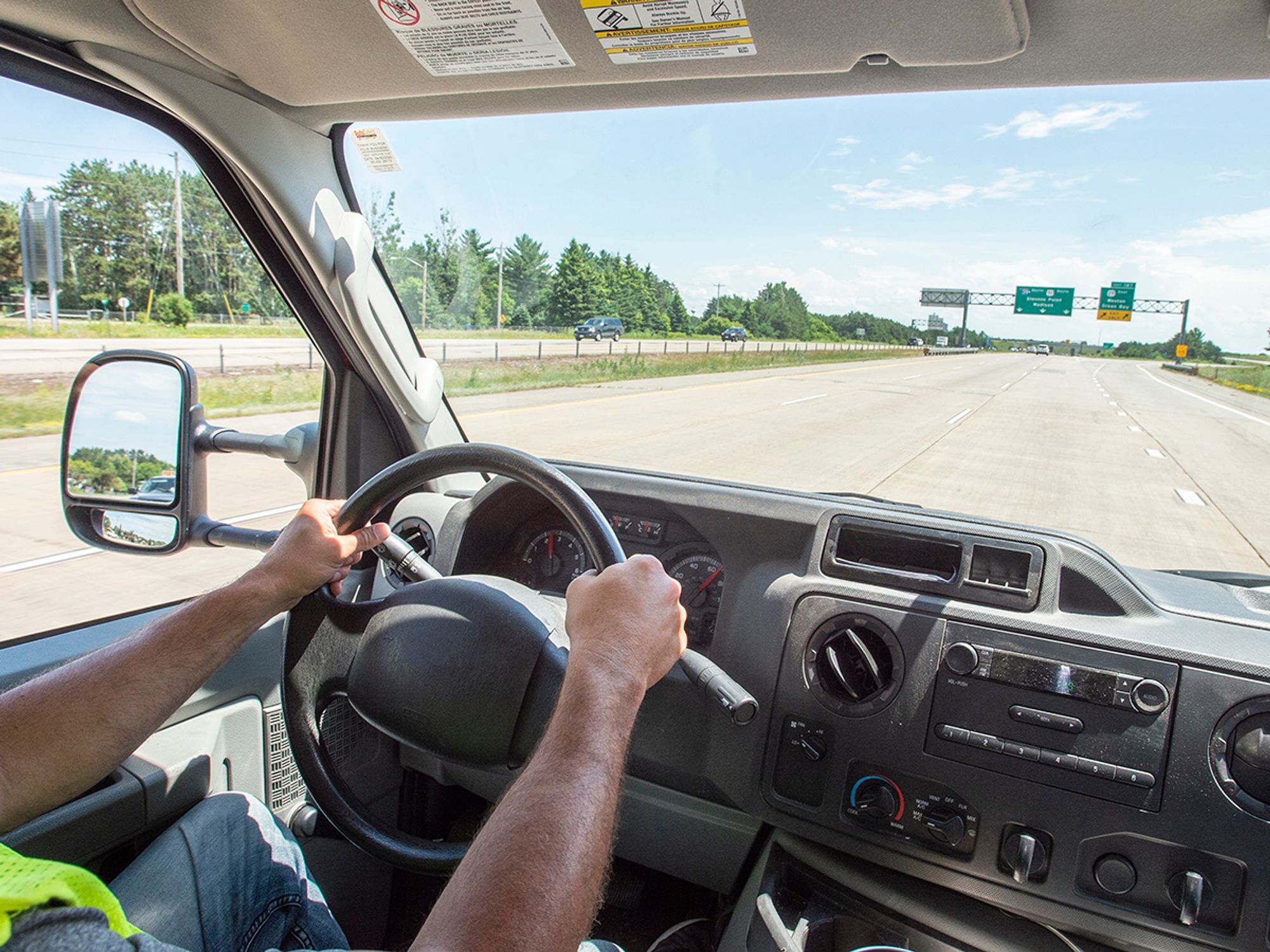Windows and windshields

- The glazing material (laminated glass) used in windshields, windows, and doors on a motor vehicles manufactured on or after December 25, 1968, must meet or exceed the federal requirements in effect at the time of the vehicle’s manufacture
- Each windshield must be free of discoloration or damage in the area extending upward from the height of the top of the steering wheel (excluding a two inch border at the top of the windshield) and extending from a one inch border at each side of the windshield or the windshield panel.
- Devices mounted on the interior of the windshield, except for vehicle safety technologies, must not be mounted more than six inches below the upper edge of the windshield, outside the area swept by the windshield wipers, and outside the driver’s sight lines to the road and highway signs and signals.
Each bus, truck and truck-tractor must have a windshield. Each windshield or portion of a multi-piece windshield must be mounted using the full periphery of the glazing (laminated glass) material. (393.60(b))
Each truck and truck tractor (except trucks engaged in armored car service) must have at least one window on each side of the driver’s compartment. The minimum size and configuration requirements for the side windows are set forth in 393.61.
Glazing (laminated glass) material
The glazing material (laminated glass) used in windshields, windows, and doors on a motor vehicle manufactured on or after December 25, 1968, must meet or exceed the requirements of Federal Motor Vehicle Safety Standard (FMVSS) No. 205 in effect on the date of manufacture of the motor vehicle. The glass must be marked in accordance with FMVSS No. 205 ( 571.205, S6). (393.60(a))
Windshield condition
Except for certain exceptions set forth below, each windshield must be free of discoloration or damage in the area extending upward from the height of the top of the steering wheel (excluding a two inch border at the top of the windshield) and extending from a one inch border at each side of the windshield or the windshield panel. Exceptions:
- Coloring or tinting of windshields and windows. (393.60(d))
- Any crack that is not intersected by any other cracks.
- Any damaged area which can be covered by a 3/4 inch disc if not closer than three inches to any other similarly damaged area. (393.60(c))
Coloring or tinting of windshields and windows
The coloring or tinting of windshields and the windows to the immediate right and left of the driver is allowed. The parallel luminous transmittance through the colored or tinted glazing may not be less than 70 percent of the light at normal incidence in those portions of the windshield or windows which are marked as having a parallel luminous transmittance of not less than 70 percent. The transmittance restriction does not apply to other windows on the commercial motor vehicle. (393.60(d))
Obstructions to the driver’s field of view
Devices mounted on the interior of the windshield — Antennas, and similar devices must not be mounted more than six inches below the upper edge of the windshield, outside the area swept by the windshield wipers, and outside the driver’s sight lines to the road and highway signs and signals.
Exception: This rule, however, does not apply to vehicle safety technologies mounted on the interior of a windshield. Devices with vehicle safety technologies must be mounted outside the driver’s sight lines to the road and to highway signs and signals, and: (1) not more than 8.5 inches below the upper edge of the area swept by the windshield wipers; or (2) not more than 7 inches above the lower edge of the area swept by the windshield wipers. (393.60(e)(1))
Decals and stickers mounted on the windshield — Commercial Vehicle Safety Alliance (CVSA) inspection decals, and stickers or decals required under federal or state laws may be placed at the bottom or sides of the windshield provided they do not extend more than 4 1/2 inches from the bottom of the windshield, are located outside the area swept by the windshield wipers, and outside the driver’s sight lines to the road and highway signs or signals. (393.60(e)(2))
